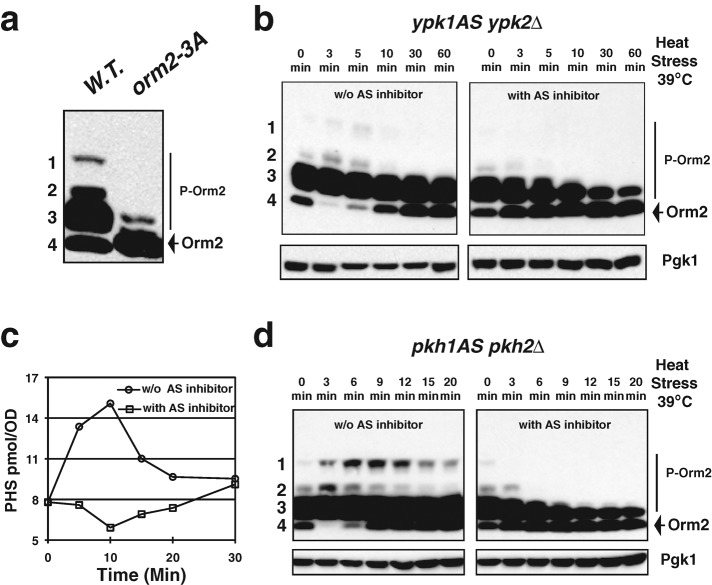FIGURE 4:
Ypk kinase transmits heat stress signals to the sphingolipid biosynthesis pathway via Orm phosphorylation. (a, b, d) Western blots showing Orm2 phosphorylation patterns after separation of the indicated yeast cell extracts on phosphate affinity gels (top). P-Orm2 indicates phosphorylated forms of Orm2. Pgk1 was used as a loading control (bottom). All cells were grown to early log phase in YPD at 25°C before the indicated treatments. Cell extracts were prepared as described in Materials and Methods. (a) Orm2 residues S46, S47, and S48 are responsible for slower migration of phosphorylated Orm2. (b) Orm2 phosphorylation in response to heat stress in the absence of Ypk activity. Dimethyl sulfoxide (DMSO) alone or 50 μM of 3-MOB-PP1 dissolved in DMSO, which specifically inhibits ypk1-as kinase activity, was added to ypk1as ypk2∆ cells upon shift from 25 to 39°C. (c) Heat-induced sphingoid base accumulation requires Ypk kinase activity. The C18-PHS concentration was determined in the ypk1as ypk2∆ cells cultured in the absence (line with circle) or the presence (line with square) of 50 μM 3-MOB-PP1 shifted from 25 to 39°C for the indicated times. (d) Orm2 phosphorylation status upon heat stress in the absence of Pkh activity. DMSO alone or 100 μM CZ21 dissolved in DMSO, which specifically inhibits pkh1-as kinase activity, was added to pkh1as pkh2∆ cells upon shift from 25 to 39°C.

